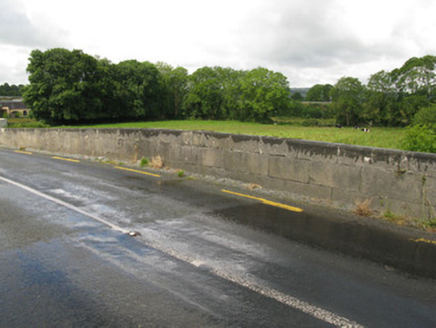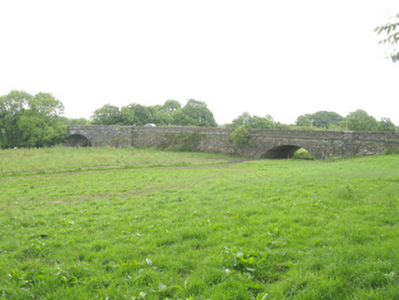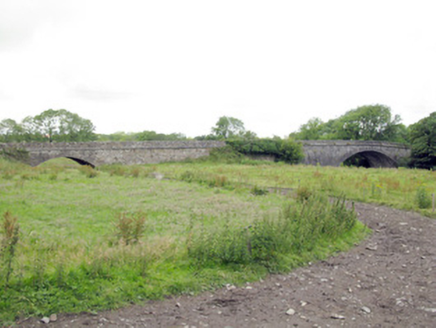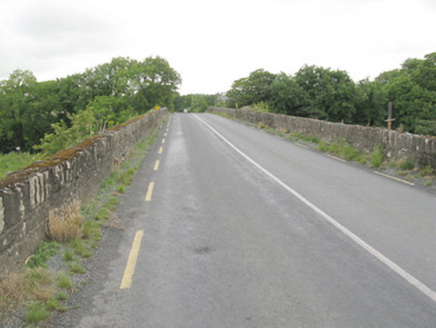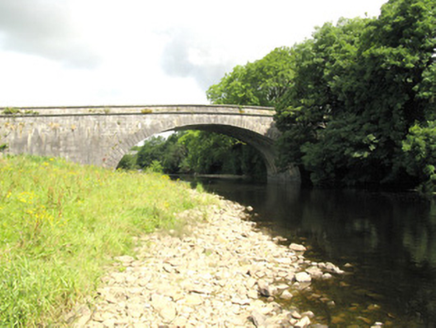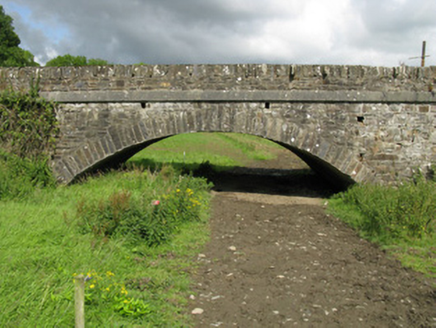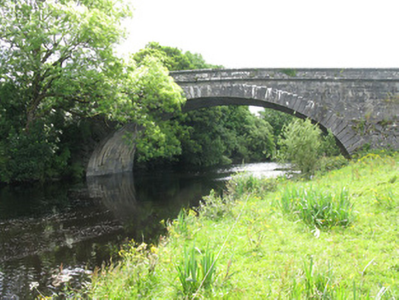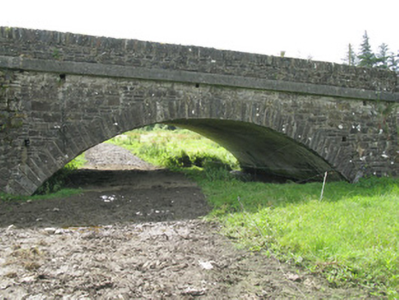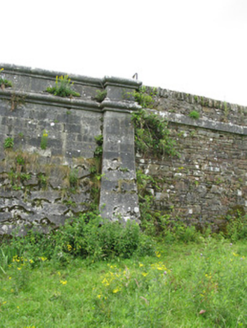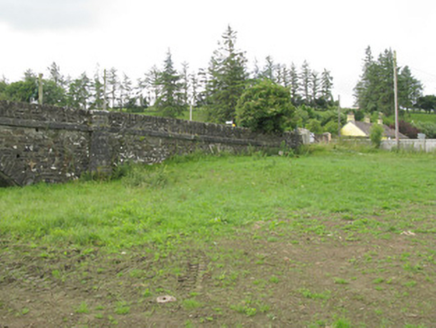Survey Data
Reg No
21905101
Rating
Regional
Categories of Special Interest
Architectural, Scientific, Technical
Original Use
Bridge
In Use As
Bridge
Date
1820 - 1840
Coordinates
109650, 123093
Date Recorded
07/07/2009
Date Updated
--/--/--
Description
Pair of single-span humpback road bridges, built c. 1830. Having elliptical-headed arch over the River Feale and redundant camber-headed arch to south-west. Dressed limestone voussoirs and rendered soffit to camber-headed arch, having rubble stone spandrels. Surmounted by dressed limestone stringcourse and rubble stone parapets with rubble stone coping. Flanked to north-east by battered dressed limestone piers with tooled limestone capping, and rubble stone terminal piers to south-west. Tooled limestone bevelled voussoirs and tooled limestone soffit to elliptical-headed arch springing from battered tooled limestone piers and spandrels with diminishing courses, flanked by battered piers. Surmounted by tooled limestone stringcourse and parapet with tooled limestone coping stones.
Appraisal
This unusual bridge is a significant element of the architectural heritage of south Limerick and north Kerry. It was designed and built by the engineer Richard Griffith (1784-1878) and cost £2,614. Its imposing form dominates the surrounding landscape and is fine example of early nineteenth-century engineering. The contrasting styles of arches, coupled with the varying use of dressed limestone and rubble stone, greatly enhance the visual appeal of this fine bridge and also infer that the bridge may have been built in two stages, with the later ashlar span being constructed following the diversion of the river course. This theory, however, is unsubstantiated as no reference to such an event can be found. The high level of skill possessed by the masons of this period is evident throughout the structure with a finely executed elliptical arch with its diminishing coursed spandrels increasing the sense of height. Tooled limestone stringcourses and moulded limestone coping add further interest to the structure.
